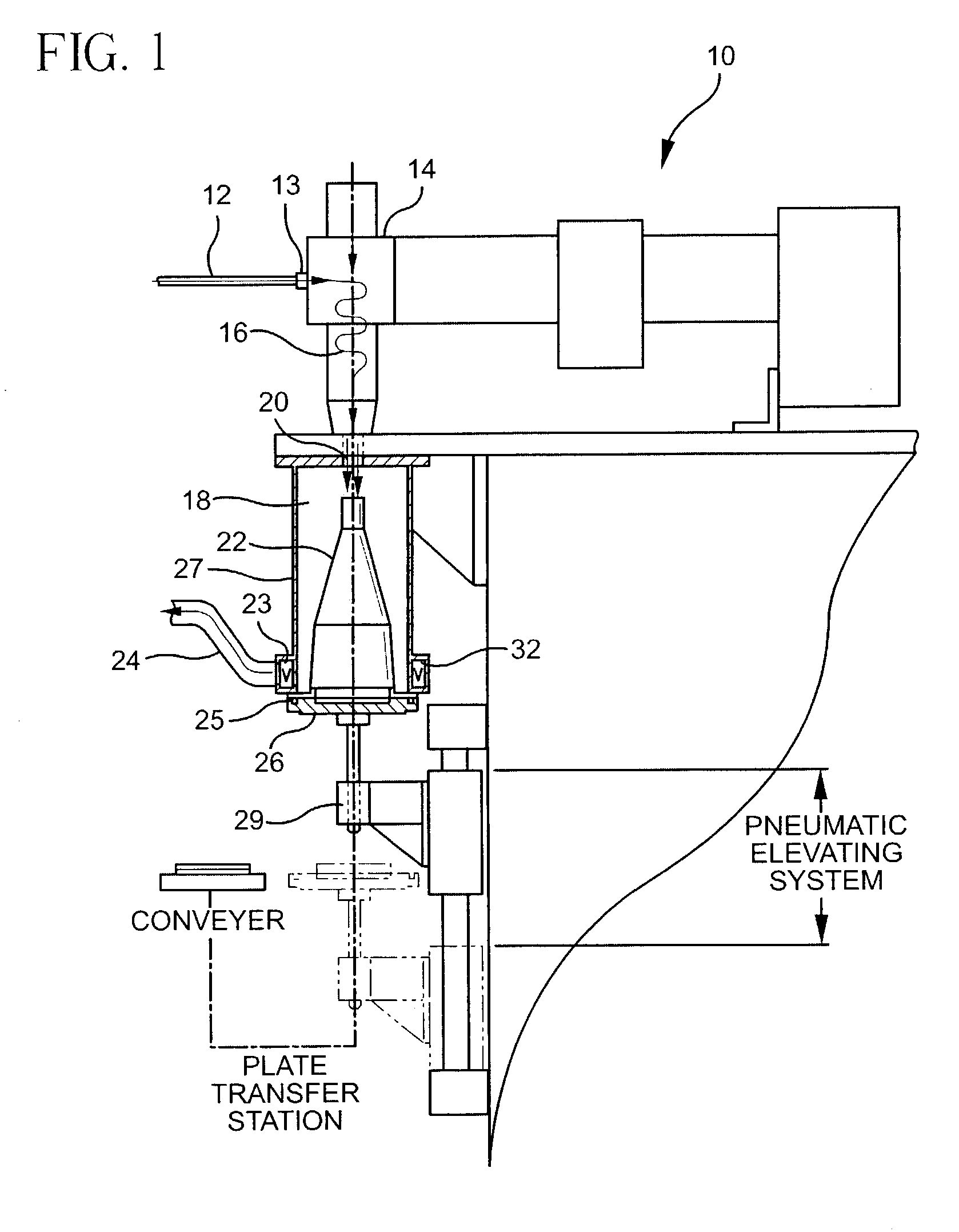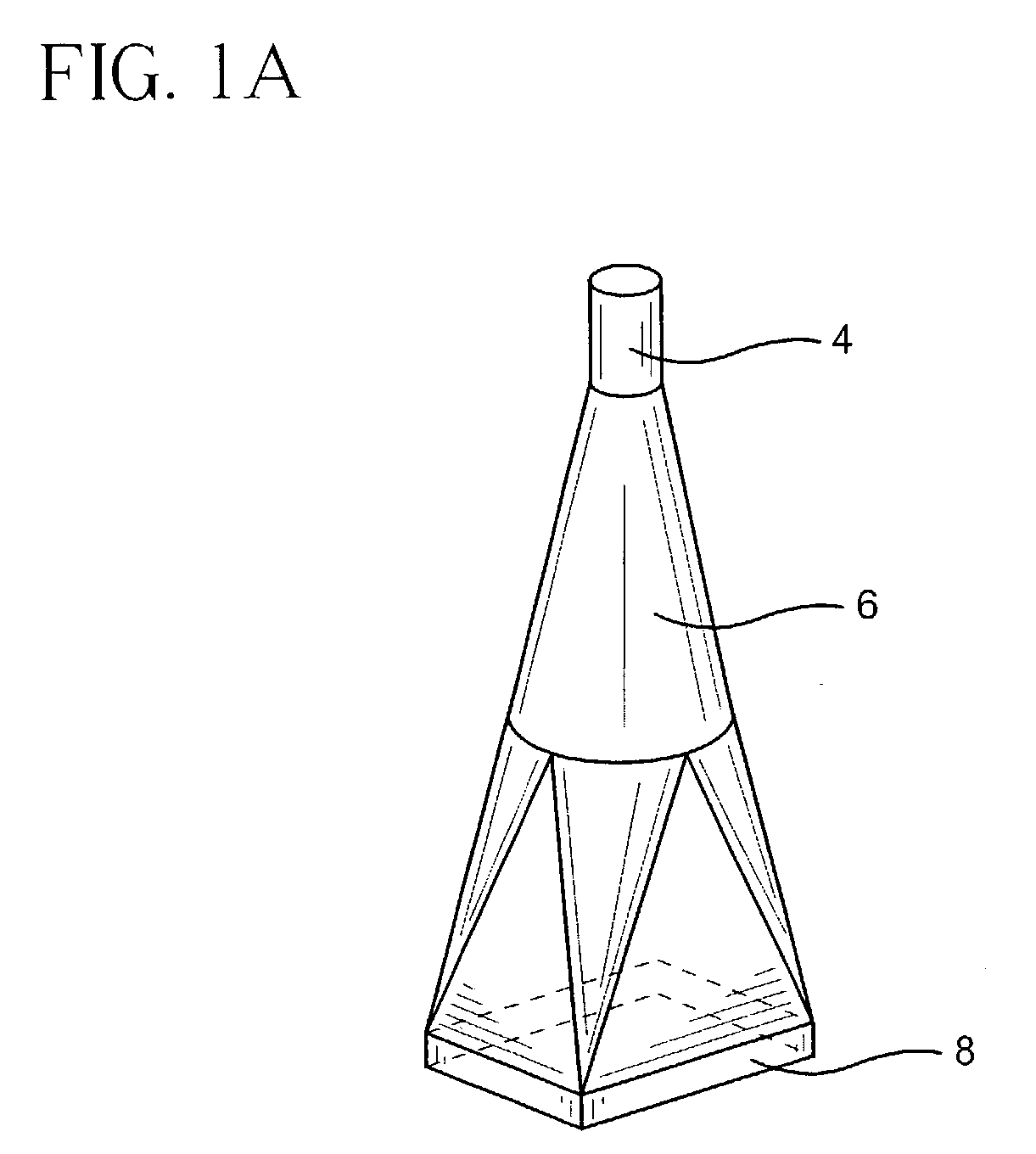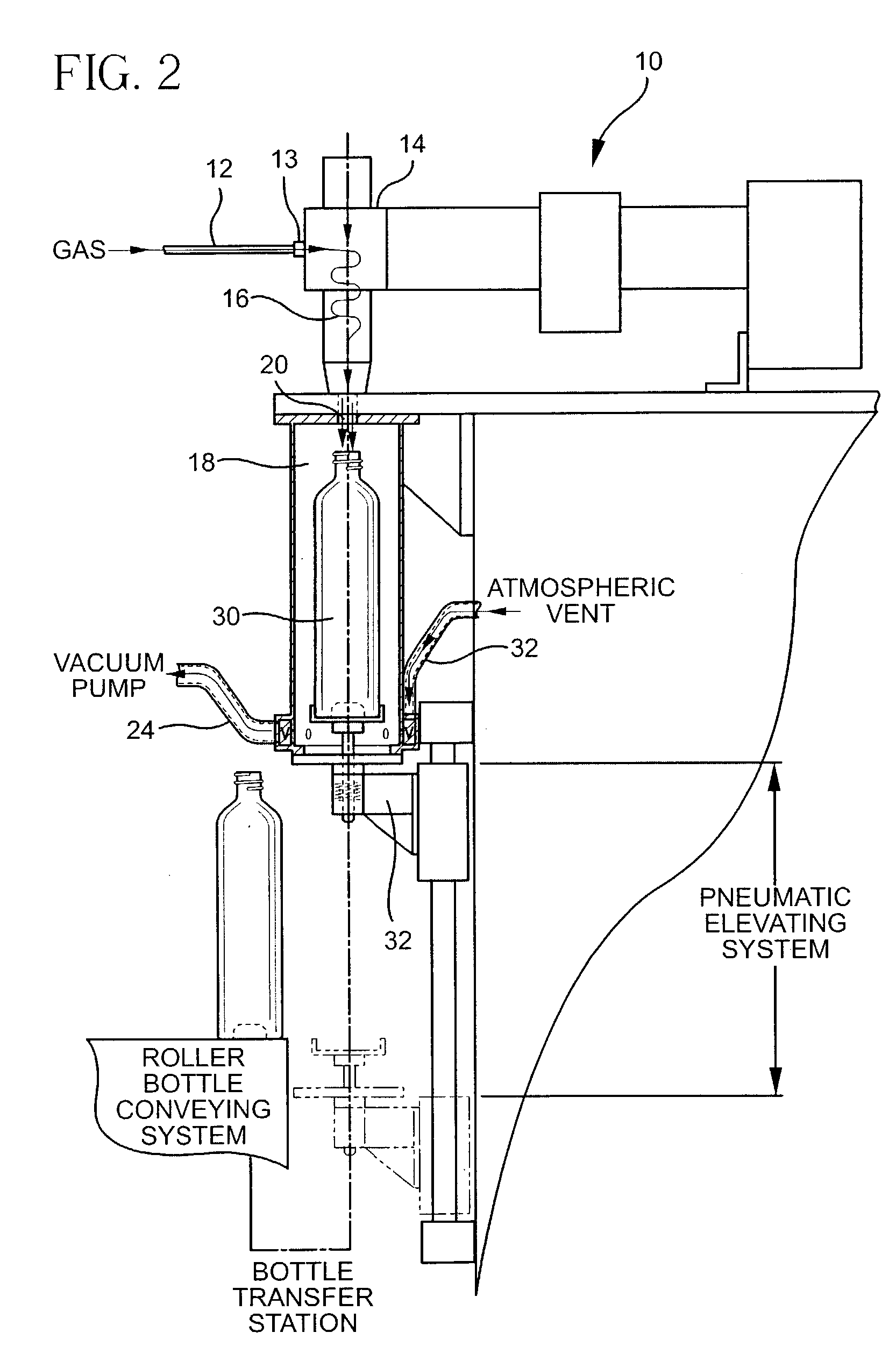Cell growth surface on a polymeric substrate
a polymeric substrate and growth surface technology, applied in the field of cell growth surface on a polymeric substrate, can solve the problems of serum adverse effects and tend to decay, and achieve the effects of increasing the number of cells, and increasing the number of oxygen
- Summary
- Abstract
- Description
- Claims
- Application Information
AI Technical Summary
Benefits of technology
Problems solved by technology
Method used
Image
Examples
example 1
[0029] Surface Morphology
[0030] FIGS. 4 and 5 are AFM micrographs demonstrating surface morphology of a plasma treated surface created according to the present method. The above described apparatus and method were employed in order to produce the sample as shown in FIGS. 4 and 5. Nitrous oxide was used as the process gas, at a pressure of 270 millitorr, at a rate of 500 cc / min. The output from the microwave generator was 1500 watts, and the part was exposed to the plasma stream for 20 seconds.
[0031] FIG. 4 shows the surface in water, while FIG. 5 shows the treated surface in air. For comparative purposes, FIG. 6 shows a surface that has been treated by a conventional RF plasma technique (using oxygen as a process gas, at a pressure of 270 millitorr, rate of 500 cc / min, and output from RF of 600 watts, treated for 3 minutes) as it appears in water. It can be noted that the surface of the microwave plasma treated substrate changes significantly when exposed to water. A roughened and h...
example 2
[0032] Contact Angle
[0033] FIG. 7 is a graphical demonstration of contact angle measurements performed over a two-year period on the surface of three blow-molded, treated polystyrene roller bottles. Roller bottles were treated with standard RF plasma treatment, with microwave oxygen plasma under the same conditions as described above, and with microwave nitrous oxide plasma, also under the same conditions as described above. All of the roller bottles used in the experiment were from the same manufacturing run, surface treated at the same time, and subsequently gamma sterilized at the same time and under the same dosage. As can be ascertained by the table of FIG. 7, all three treatment methods showed an increase in contact angle over time. However, the microwave plasma treated roller bottles show significantly lower contact angles at time zero. As a consequence, even after over two years, the contact angle measured in the bottles affected by the microwave plasma treatment of the pres...
example 3
[0034] Oxygen Content (MW Plasma v. RF Plasma)
[0035] Table 1 compares the surface chemistry of blow molded polystyrene roller bottles treated with RF plasma, microwave oxygen plasma, microwave nitrous oxide plasma, and an untreated control. Both the microwave plasma treatments were run with gas pressure of 270 millitorr, flow rate of 500 cc / min, output from microwave of 1500 watts and exposure time of 20 seconds. The RF plasma treatment was performed under the identical conditions described in Example 1 above. After treatment, the surfaces of the bottles were analyzed using ESCA (Electron Microscopy for Chemical Analysis). This test analyzes polystyrene for percentages of oxygen, carbon, and nitrogen species on the surface. As can be readily observed from the results, untreated polystyrene has approximately one hundred percent carbon species on its surface. RF plasma treatment significantly increases the oxygen surface content (17.8%), and creates a slight amount of nitrogen (0.2%)....
PUM
 Login to View More
Login to View More Abstract
Description
Claims
Application Information
 Login to View More
Login to View More - R&D
- Intellectual Property
- Life Sciences
- Materials
- Tech Scout
- Unparalleled Data Quality
- Higher Quality Content
- 60% Fewer Hallucinations
Browse by: Latest US Patents, China's latest patents, Technical Efficacy Thesaurus, Application Domain, Technology Topic, Popular Technical Reports.
© 2025 PatSnap. All rights reserved.Legal|Privacy policy|Modern Slavery Act Transparency Statement|Sitemap|About US| Contact US: help@patsnap.com



